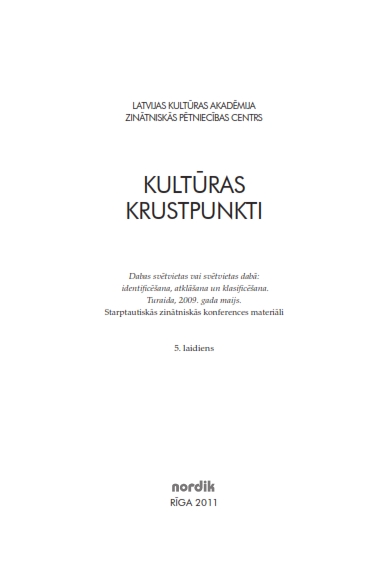Microcosms and Borders – On Centrality and Linearity in Connection with Holy or Sacred Places
Microcosms and Borders – On Centrality and Linearity in Connection with Holy or Sacred Places
Author(s): Christer WesterdahlSubject(s): Archaeology, Cultural history, Customs / Folklore, Ethnohistory, Cultural Anthropology / Ethnology, Sociology of Religion, History of Religion
Published by: Latvijas Kultūras akadēmija
Keywords: Natural holy places; sacred places; archaeology; history of religions; artificial structures;
Summary/Abstract: Two principles are discerned in open-air holy places: centrality in the sense of a particular point or ring, and linearity in the sense of borders which have to be passed to reach the site, or linearity in the sense of a liminal zone, such as the seaboard. There is no obvious way of separating entirely natural sites, seemingly uninfluenced by humans, and those which have some modest artificial structures. Holy places are in both cases a product of society. Some are more or less for common use, while others are highly restricted to segments of that society. A reasonable supposition would be that, due to the power contained in them, some were kept as secret as possible. Most of the author’s experience relates to sites in Sweden, but the examples have an international scope. The aspects considered are those of archaeology and the history of religions.
Journal: Culture Crossroads
- Issue Year: 5/2011
- Issue No: 1
- Page Range: 142-167
- Page Count: 26
- Language: English

